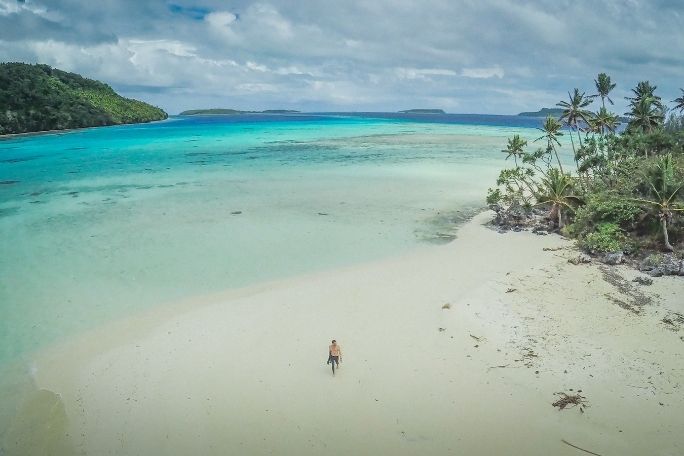Lesson summary
This lesson incorporates clips from Blue The Film as learning inspiration. Students explore the role of the ocean and some of the different habitats that can be found in the ocean. Students begin by reflecting on a range of artworks that represent different marine habitats. They are then asked to think about the role of the ocean and how the marine habitats support these roles. They then work in groups or pairs to create an artwork to communicate a message about ocean habitats, and share their artworks with the class.
Learning intentions:
Students will...
- understand the role of the ocean
- identify some of the different ocean habitats and some of the organisms that live in these habitats.
Success criteria:
Students can...
- identify how important the ocean is in supporting all life on earth
- identify at least two ocean habitat types
- identify at least four living things found within one habitat type
- create an art piece to share their ideas
- present their artwork and share their ideas.
Lesson guides and printables
Lesson details
Curriculum mapping
Australian Curriculum content descriptions:
Year 3 Science:
- Living things can be grouped on the basis of observable features and can be distinguished from non-living things (ACSSU044)
- Science knowledge helps people to understand the effect of their actions (ACSHE051)
Year 4 Science:
- Living things depend on each other and the environment to survive (ACSSU073)
- Science knowledge helps people to understand the effect of their actions (ACSHE062)
Year 3 & 4 Visual Arts:
- Use materials, techniques and processes to explore visual conventions when making artworks (ACAVAM111)
- Present artworks and describe how they have used visual conventions to represent their ideas (ACAVAM112)
Syllabus outcomes: ST2-10LW, ST2-11LW, VAS2.2, VAS2.1.
General capabilities: Critical and Creative Thinking.
Cross-curriculum priority: Sustainability OI.2.
Relevant parts of Year 3 Science achievement standards: Students group living things based on observable features.
Relevant parts of Year 4 Science achievement standards: Students describe relationships that assist the survival of living things.
Relevant parts of Year 3 & 4 Visual Arts achievement standards: Students collaborate to plan and make artworks that are inspired by artworks they experience. They use visual conventions, techniques and processes to communicate their ideas.
Unit of work: Blue The Film: Inquiry – Years 3 & 4.
Time required: 60 mins.
Level of teacher scaffolding: Medium – oversee activities and lead discussions.
Resources required
- Student Worksheet – one copy per student
- Device capable of presenting a website to the class
- Art materials
- Printed copies of the following marine habitat posters:
- Open water poster (Victorian Government)
- Kelp forests poster (Victorian Government)
- Seagrass meadow and mudflat poster (Victorian Government)
- Rocky reef poster (Victorian Government)
- Mangroves poster (Victorian Government)
Skills
This lesson is designed to build students’ competencies in the following skills:
- Communication
- Collaboration
- Creativity
Additional info
Blue is a feature documentary film charting the drastic decline in the health of our oceans. With more than half of all marine life lost and the expansion of the industrialization of the seas, the film sets out the challenges we are facing and the opportunities for positive change. Blue changes the way we think about our liquid world and inspires the audience to action. Find out how to screen or download the film here. Along with the film is an ambitious global campaign to create advocacy and behaviour change through the #oceanguardian movement. To become an ocean guardian, see the website.


Welcome back!
Don't have an account yet?
Log in with:
By signing up to Cool.org you consent and agree to Cool's privacy policy to
store, manage and process your personal information. To read more, please see
our privacy policy here(Opens in new tab).
Create your free Cool.org account.
Many of our resources are free, with an option to upgrade to Cool+ for premium content.
Already have an account?
Sign up with:
By signing up to Cool.org you consent and agree to Cool's privacy policy to
store, manage and process your personal information. To read more, please see
our privacy policy here(Opens in new tab).